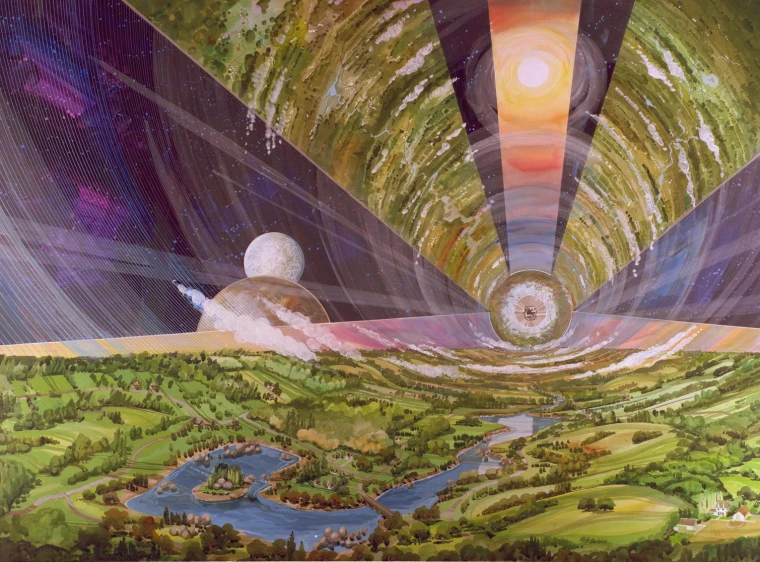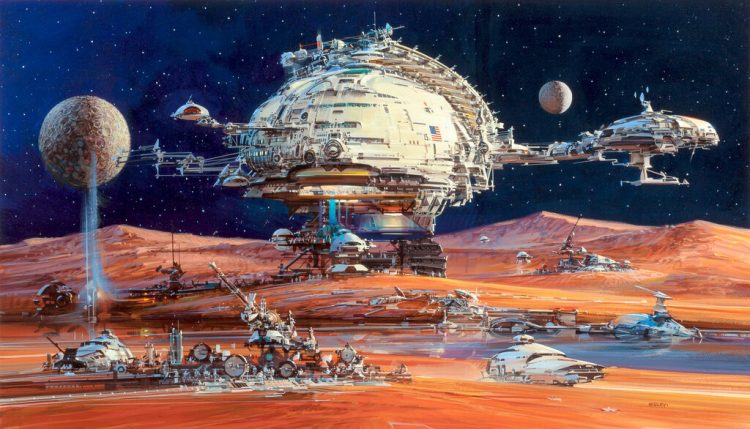Introduction: Humanity at the Edge of a Cosmic Era
The dream of expanding beyond Earth is no longer confined to science fiction. The Moon and Mars have emerged as the two primary targets of colonization programs, each with unique opportunities and challenges. From NASA’s Artemis program aiming to return humans to the Moon, to SpaceX’s Mars vision, these initiatives are transforming the way we perceive science, technology, and the destiny of our species.
This essay explores space colonization through three lenses: scientific evolution, technological transformation, and human redefinition.
Part I – Science Transformed by Space Colonization
1.1 Lunar Science: Gateway to the Solar System
- The Moon acts as a natural laboratory for planetary science.
- Its geology provides records of early solar system history.
- Polar regions with permanent ice deposits could reveal clues about water distribution in the cosmos.
1.2 Mars as a Biological Frontier
- Search for past or present microbial life reshapes astrobiology.
- Martian soil and atmosphere studies deepen our understanding of planetary habitability.
- Potential parallels with Earth’s climate history offer lessons for environmental science.
1.3 Broader Scientific Impacts
- Astronomy from the Moon’s far side: shielded from Earth’s radio interference.
- Experiments in low gravity and vacuum environments enable breakthroughs in physics and chemistry.
Part II – Technology in the Age of Colonization
2.1 Propulsion and Transportation
- Reusable rockets (SpaceX Falcon, Starship) reduce costs dramatically.
- Nuclear propulsion promises faster interplanetary travel.
- Advances in landing precision critical for lunar and Martian bases.

2.2 Life Support and Habitats
- Closed-loop systems for oxygen, water, and food recycling.
- 3D printing with lunar regolith or Martian soil reduces dependence on Earth.
- Radiation shielding innovations protect colonists.
2.3 Robotics and AI
- Autonomous machines build habitats, mine resources, and explore terrain.
- AI-driven medical assistance vital in isolated environments.
2.4 Energy Systems
- Solar power as a primary source on the Moon and Mars.
- Research into fusion and nuclear energy for long-term sustainability.
Part III – Humanity Redefined
3.1 Psychological and Cultural Shifts
- Living on other worlds challenges identity: Earthlings or Martians?
- New forms of governance may emerge in isolated colonies.
- Art and culture influenced by alien landscapes and survival themes.
3.2 Ethical Considerations
- Planetary protection: avoiding contamination of Mars with Earth microbes.
- Who owns lunar or Martian resources? Need for space law reform.
- Social justice: risk of space colonization deepening inequality.
3.3 Economic and Political Transformations
- Emergence of a space economy based on resource extraction and tourism.
- Competition between nations could spark geopolitical tensions.
- Alternatively, colonization could foster unprecedented global cooperation.
Part IV – Case Comparisons: Mars vs. the Moon
| Aspect | Moon | Mars |
|---|---|---|
| Distance from Earth | ~384,000 km | ~225 million km (avg.) |
| Gravity | 1/6 Earth | 1/3 Earth |
| Atmosphere | None | Thin CO₂ atmosphere |
| Resources | Water ice, regolith, helium-3 | Water ice, potential organics |
| Usefulness | Gateway, resource hub | Long-term settlement, new frontier |
- Moon: closer, ideal for early colonies and testing technologies.
- Mars: ultimate destination for permanent human settlement.
Part V – Future Visions
5.1 Staged Colonization
- First: research outposts on the Moon.
- Second: semi-permanent bases for mining and science.
- Third: Mars missions with cities envisioned for the late 21st century.
5.2 Beyond Mars
- Asteroid habitats, orbital stations, and eventually missions to Jupiter’s moons.
- Colonization may evolve into an interplanetary civilization.
Conclusion: Humanity’s Cosmic Transformation
From the Moon’s craters to the plains of Mars, colonization programs are rewriting humanity’s narrative. They expand our scientific horizons, drive technological revolutions, and challenge what it means to be human.
While risks remain—radiation, costs, ethics—the pursuit of space colonization reflects the human spirit of exploration. As we transition from planetary dependence to interplanetary ambition, the Moon and Mars become stepping stones to a future where humanity is no longer confined to one fragile world, but part of a vast and shared cosmic frontier.
















































